Fact: anyone who says the eighties were a “golden age” for film is wrong, wrong, wrong, as the year 1986 proves quite amply. This was the first retro Year in Bedlam listing in which I had trouble coming up with thirty worthwhile films (whereas usually I find myself faced with too many choices), a fact that shouldn’t surprise anyone given that the major movies of ‘86 were TOP GUN, STAND BY ME and FERRIS BUELLER’S DAY OFF, none of which ever did much for me (my favorite of the year’s blockbusters was always the R-rated RUTHLESS PEOPLE, which I’d argue has held up better than any of the others).
Of course it was also the year of BLUE VELVET, THE FLY and ALIENS, so the news wasn’t all bad. There were also the lesser known films profiled below, which include more than one bonafide classic for the ages, even if I did have difficulty coming up with the requisite thirty entries.
30. THE POINTSMAN (DE WISSELWACHTER)
A Dutch quirk fest with a menacing edge. Stunningly visualized, it has a pretty woman (Stephane Excoffier) stranded in an isolated railway outpost together with a spooky man (Jim Van Der Woude). They establish a relationship of sorts based on mutual need: she’s looking to find a way back to civilization and he wants company. Eventually things turn dark, with several weird dudes passing through the vicinity, all looking to have their way with the woman; she and her mate, for their part, both want sex from the other but neither is willing to fully reciprocate. There’s very little in the way of dialogue, but director Jos Stelling does such an amazing job visualizing the film that the lack of chatter wasn’t much of an annoyance.
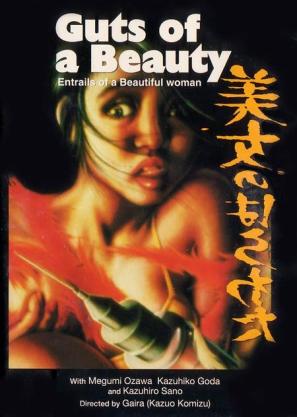 29. ENTRAILS OF A VIRGIN (SHOJO NO HARAWATA)
29. ENTRAILS OF A VIRGIN (SHOJO NO HARAWATA)
A gross, misogynistic and exploitive Japanese splatter flick that also functions as a darkly poetic exploration of the link between eroticism and death. The FRIDAY THE THIRTEENTH-like storyline has a bunch of sexy models and some sleazy photographers vacationing in the woods, where they get killed off by a swamp monster in a variety of painful ways. For once the simplicity of the story actually works in the film’s favor, as does the extremely sparse dialogue; mostly what we get is a great deal of excess fornication, all done up in garish close-ups that emphasize the exploitiveness of the act. The murder scenes are even more striking, as when a dude gets hit over the head and his eyeballs literally pop out, a graphically depicted scene intercut with a fist hitting a steak(?). A VERY strange, disturbing piece of work that, needless to add, is NOT the feel good movie of this or any year.
28. THE BEEKEEPER (O MELISSOKOMOS)
Allegedly one of the masterpieces of Greece’s late Theodoros Angelopoulos, a typically brooding and self-important account of a traveling beekeeper (Marcello Mastrionni) who initiates a romance with an attractive young woman (Nadia Mourouzi). Eventually she (understandably) dumps him, and he commits suicide by opening all his beehives and letting the bees sting him to death. Impressive Tarkovsky-esque visuals mark this film, which despite its pretention exerts a powerfully esoteric spell.
27. NUTCRACKER: THE MOTION PICTURE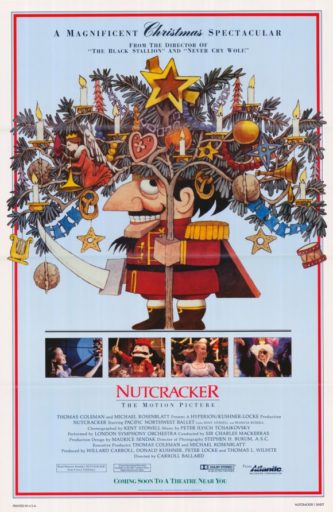
This superbly mounted film version of Tchaikovsky’s immortal ballet restores the terror and wonder that have been diluted by most modern productions of THE NUTCRACKER. Depicting the delirious dream of a young girl in which a toy nutcracker vies for her affections, it was designed by the children’s book maestro Maurice Sendak and performed by the Pacific Northwest Ballet, with direction by the great Carroll Ballard. As befits Ballard’s other films (THE BLACK STALLION and NEVER CRY WOLF, to be exact), this one is classy, well mounted and beautifully shot, with moments of shivery foreboding that fully befit the narrative’s underlying menace and sexual suggestiveness. Be advised, though, that the whole thing is essentially a filmed ballet. Ballet is not among my interests, but I know a good movie when I see one, and this is a good movie.
26. SOPHIE’S PLACE
Full disclosure: I severely dissed this animated feature in a past issue of Shock Cinema, calling it “thunderously boring” and ultimately dismissing it as “arthouse bullshit,” and to be sure, it is an unusually demanding viewing experience. The culmination of animator Harry Smith’s filmic experiments, SOPHIE’S PLACE consists of a series of classical landscapes and monuments over which cut-out animation is superimposed. Recurring objects include a set of diamond-like cubes, a flaming sun, the moon, a disembodied hand and a balloon with a nose, mouth and weeping eyes. There’s no dialogue and not much sound, with the music track consisting almost entirely of repetitive cymbal beats. Much of it has a hypnotic quality not unlike a Max Ernst collage, with several striking sequences (such as a woman skipping over the strands of a spider web). Smith himself has admitted he himself doesn’t understand what’s happening in this film, and viewing it is often akin to watching animated doodles—mighty fascinating doodles, however!
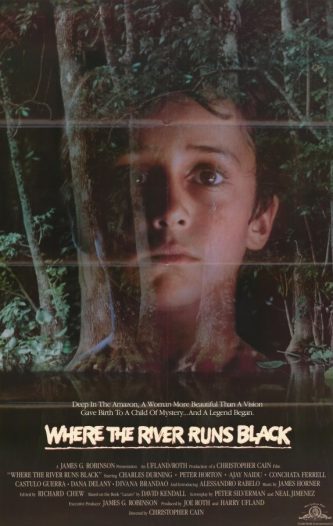 25. WHERE THE RIVER RUNS BLACK
25. WHERE THE RIVER RUNS BLACK
A stylish variant on the kid-raised-by-animals theme, with a young boy looking to avenge the murder of his mother at the hands of a savage poacher. Having spent most of his childhood in the company of Amazonian dolphins, the kid has a difficult time adapting when missionary Charles Durning takes him back to civilization, and runs away to hit the revenge trail. Pretty predictable, by-the-numbers stuff whose ultimate arc isn’t at all difficult to foresee, but the film’s real charm is its dreamy, hypnotic atmosphere, painstakingly evoked by director Christopher Cain (of THE STONE BOY and THE PRINCIPAL).
24. THERESE
John Waters has proclaimed this one of the “most bizarre” films he’s ever seen, if that means anything. It’s a French made account of St. Therese de Lisieux, a nun whose faith was allegedly so strong she refused treatment when she contacted tuberculosis. This film is an extremely eccentric, deeply felt effort that takes place entirely on a stage with a painted background, and has a narrative that precedes in short vignettes. The whole thing is extremely concentrated and to-the-point, although I still found much of it puzzling (in short, it’s an extremely French film). I was consistently interested, I’ll say that much.
23. BRIDGE TO NOWHERE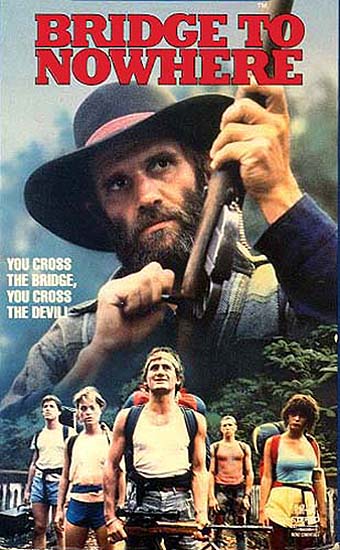
In which some New Zealand filmmakers outdid their Australian neighbors in exploitation movie madness. I’ve never thought much of the 1986 Oz-sploiters FAIR GAME or DEAD END DRIVE-IN, but liked BRIDGE TO NOWHERE a fair amount. A classic it isn’t, but the film does compare favorably to no budget outrages like THE HOUSE BY THE LAKE and RITUALS. Its strengths are in its unadorned relentlessness, with five young folk embarking on a wilderness sojourn, during which they run into a trigger-happy mountain-dweller (the late Bruno Lawrence) who makes their lives Hell. Lawrence elevates his character far beyond the standard mask-wearing eighties horror movie heavy, while director Ian Mune succeeds in maintaining an aura of grimy realism. The film doesn’t revel in gore but does contain its share of nastiness, with a dog stabbed to death and a number of the human characters meeting similarly unpleasant ends.
22. DEATH POWDER (DESU PAWUDA)
An example of late Twentieth Century Japanese cyber-horror, even though DEATH POWDER was released three years before Shinya Tsukamoto’s TETSUO officially set the perimeters for such fare. It’s nonetheless very much in the J-cyber tradition, with an android woman known as Guernica laid out in a refuse-littered warehouse and three mercenaries attempting to steal her. They end up inhaling a mist emitted by Guernica that transports their minds to a hallucinatory world ruled by freaky humanoid creatures (identified in the credits as “Scar People”), while back in the here and now the bodies of the mercenaries are mutating into a giant slimy mass. That’s my interpretation, at least; you may feel differently about the events of this profoundly asynchronous collection of sights and sounds that’s often plain irritating. But it contains many startling Tsukamoto-worthy images, all achieved on a shoestring budget by punk rocker-turned-experimental filmmaker Shigeru Izumiysa, proving that inspiration and creativity will always be the real special effects.
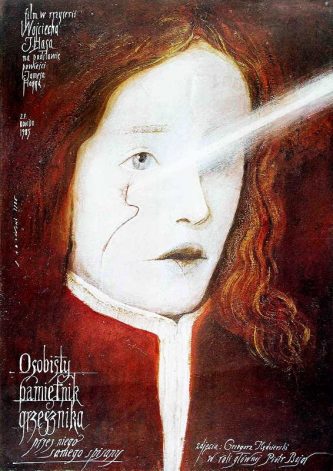 21. MEMOIRS OF A SINNER (OSOBISTY PAMIETNIK GRZESZNIKA PRZEZ NIEGO SAMEGO SPISANY)
21. MEMOIRS OF A SINNER (OSOBISTY PAMIETNIK GRZESZNIKA PRZEZ NIEGO SAMEGO SPISANY)
MEMOIRS OF A SINNER, the second-to-last film by Poland’s Wojciech Has (of THE SARAGOSSA MANUSCRIPT and THE HOURGLASS SANATORIUM), is a fabulously opulent adaptation of James Hogg’s gothic classic. It concerns a man (Piotr Bajor) who’s resurrected from the dead by a gravedigger, and relates how he was led by the Devil to kill his brother. This he did, and afterward suffered severe reality dislocation as a malevolent double went about committing crimes for which Bajor was blamed. The whole thing is extremely slow moving and message heavy—like the novel, it’s concerned with the vagaries of hypocrisy, specifically the concept of “justified sin”—but it also has a gorgeous gothic look, and the second half, in which reality and hallucination become increasingly blurred, exerts a definite trippy fascination.
20. COMRADES
A most unlikely three hour historical epic from a most unlikely auteur: Scotland’s late Bill Douglas, who’s best known for his autobiographical “Childhood” trilogy (MY CHILDHOOD, MY AIN FOLK, MY WAY HOME). The elliptical storytelling and atmospheric naturalism of those films were carried over into this one, which relates the tribulations of the 19th Century “Tolpuddle Martyrs.” This coalition consisted of several British farmers who, tired of being kicked around by selfish landowners, got together to form one of the world’s first trade unions—and for their troubles were arrested and deported to Australia. Douglas depicts roughly two hours’ worth of the Tolpuddlers’ activities in Britain, with the final hour situated Down Under, and entailing servitude, physical abuse and a style that falls somewhere between those of David Lean and Peter Weir. The film never takes a familiar or expected turn, and that’s to its credit, although I feel Douglas plays down the dramatic elements a bit too much. His primary concern was in the left-of-center political overtones, which are allowed to overpower the drama to the point that near the end we get, in place of any real narrative resolution, an impassioned speech delivered directly to the camera about the evils of exploitation.
19. KAMIKAZE HEARTS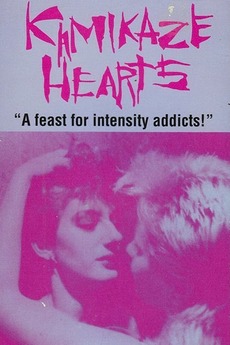
The phrase “documentary realism” could well have been invented for this film, a staged drama whose naturalistic veneer is so convincing that quite a few reviewers misidentified it as an actual doco. It depicts the San Francisco porn scene of the 1980s, where the veteran fuck movie mainstay Mitch (Sharon Mitchell) is caught up in a torrid affair with the up-and-coming starlet Tigr (Tigr Mennett). The former is an irrepressible narcissist who by her own admission never stops performing on or off camera (thus making her an excellent subject for a film that flaunts its blurring of fiction and reality), while the latter is a bit too needy for her own good. Director Juliet Bashore depicts this coupling in a notably rambling, unstructured manner, which doesn’t always make for an especially edifying viewing experience but does enhance the documentary veneer. We see these gals passionately making out, arguing, attempting to maintain their composure on tension-laden porn sets and shooting up cocaine (for real). The film works as both an anthropological study of 1980s counterculture and an unfettered depiction of a dysfunctional affair, although it leaves much to be desired from a narrative standpoint.
18. THE FUGITIVES (LES FUGITIFS)
I’m not a huge proponent of French comedy, but can’t deny that this Frogland yuckfest is terrific entertainment. Written and directed by Francis Veber (who did the same chores on the vastly inferior 1989 Hollyweird remake THREE FUGITIVES), it’s a lively farce that’s about as far removed from the work of recognizably French auteurs like Godard and Rivette as it’s possible to get. Yet it also has a harsh, gritty edge that marks it out as quintessentially Gallic, and helps to partially offset the goofy and sentimental moments, of which there are, admittedly, a few too many. Gerard Depardieu stars as a just-paroled thief taken hostage by bank robber Pierre Richard, entailing an oft-hilarious series of mishaps that come to involve Richard’s young daughter. The latter is, of course, impossibly cute and well behaved, which adds an extra level of implausibility to a film that’s never too believable to begin with, but Veber’s wit and ceaseless invention keep the proceedings moving right along.
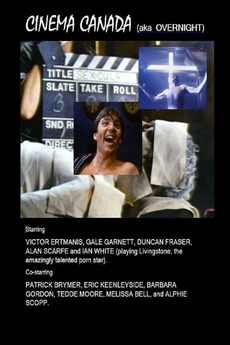 17. OVERNIGHT (CINEMA CANADA; NOT ANOTHER DIRTY LITTLE MOVIE)
17. OVERNIGHT (CINEMA CANADA; NOT ANOTHER DIRTY LITTLE MOVIE)
Writer-director Jack Darcus is a none-too-valued commodity in much of the world, including his native Canada, but over the past four decades he’s carved out a unique niche in the Vancouver film scene. OVERNIGHT is in many respects his most interesting work, a (very) dark comedy about the making of a porno flick with much to say about moviemaking in the Great White North (hence the film’s original title CINEMA CANADA, and its signature line of dialogue: “We may be little and dirty, but we’re Canadian”). Yet the calamities related here are common to independent film productions everywhere. The film within a film, an XXX-rated Dracula pastiche (inspired by 1974’s SEXCULA), is helmed by a pretentious European director (Alan Scarfe) and produced by an unscrupulous businessman (Duncan Fraser), with the production descending into a perpetual tug-of-war between their warring sensibilities. Other problems include a pivotal player being lured away by rich American producers and another succumbing to despair as loyalties and production roles constantly shift, and all semblance of art, or even exploitation, is jettisoned in a mad dash to simply get the shoot finished. As with most Darcus productions OVERNIGHT is beset by distractingly low budget production values, yet the script is smart, perceptive and quite truthful in the manner of better-known movies-about-moviemaking like LIVING IN OBLIVION and MISTRESS. The acting honors go to Scarfe, who sports a convincing Czech accent and haughty manner common to seemingly all pretentious directors.
16. BAND OF THE HAND
Fun eighties movie cheese from executive producer Michael Mann and director Paul Michael Glaser. Mann was known at the time for MIAMI VICE, which explains this film’s glitzy visuals and Miami setting. Featured are five wayward teens—a young John Cameron Mitchell among them—taken into the custody of Stephen Lang as a tough war veteran, who puts his charges through an improvised boot camp in the everglades. From there they move into a Miami slum, which they decorate in a very 80s chic manner. They also run afoul of the local drug lords, whose ranks include Laurence Fishburne, James Remar and Paul Calderon. As award caliber drama this film, obviously, fails, but as testosterone-fueled action it succeeds with aplomb. Featured are some good shoot-outs and an eye-catching turn by a young Lauren Holly, who makes quite an impression.
15. THE HORSE THIEF (DAO MA ZEI)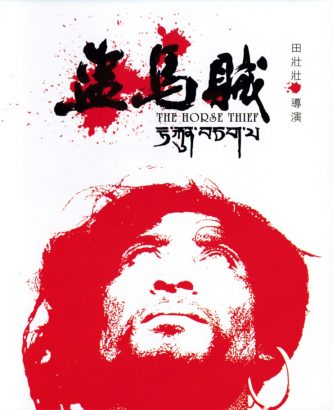
In which the unforgiving, but extremely photogenic, landscape of Tibet is given a sumptuous cinematic treatment by China’s Zhuangzhuang Tian, whose visual eye is second to none. The narrative involves a horse thief (Rigzin Tseshang) who together with his wife and child is exiled from his tribe, and forced to navigate Tibet’s mountainous terrain on his own. Throughout, Zhuangzhuang’s focus is on the lifestyle and rituals of his nomadic principals, an existence incredibly divergent from our own. For receptive viewers the film exerts an extraterrestrial fascination comparable to the work of Russia’s Sergei Paradjanov, although in the non-visual arena it isn’t entirely copacetic. The characterizations are somewhat lacking, with the protagonist never revealing much in the way of motivation outside the obvious (brute survival), and his wife a total nonentity (how she feels about her husband’s illegal activities, and the fact that they have to brave the wilderness because of them, is never revealed). Like many an arthouse epic, THE HORSE THIEF’S charms are entirely in its eye-popping imagery, in which sense it is indeed the masterpiece so many pundits (Martin Scorsese in particular) have proclaimed it.
14. MENAGE (TENUE DE SOIREE)
A pretty typical Bertrand Blier concoction, featuring one of his favorite actors, Gerard Depardieu, as a bisexual thief. He meets up with Michael Blanc and Miou-Miou as an unhappily married couple who Depardieu inducts into the merry world of home break-ins. But this being a Blier film, it’s the sexual content that’s all-important, and as the title indicates, these three basket cases initiate a menage a trois—although, unexpectedly enough, it’s Blanc and Depardieu who prove to have the most smoldering chemistry. The homosexual content was quite shocking back in ‘86, as was the cross-dressing that overtakes the film’s final third. Obviously that shock value has long since worn off, but the film is still funny, imaginative and superbly lensed, offering a crisp widescreen tour of 1980s Paris in addition to the saucy comedy.
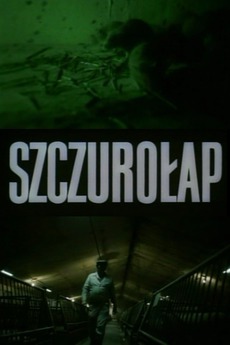 13. THE RAT-CATCHER (SZCZUROLAP)
13. THE RAT-CATCHER (SZCZUROLAP)
A very strange, haunting 20 minute documentary from Poland about a professional rat exterminator. Opening with footage of a scientist dispassionately subjecting a pair of rats to a water treading experiment in which both drown, it then shows the exterminator discussing his methodology inside a vast underground warehouse where rodents proliferate. It turns out that trapping and killing rats is far more difficult than it might seem, and involves seducing and winning the trust of the critters. Included is a great deal of impressively wrought black and white footage of the rats going about their lives in a film that often plays like a horror movie—albeit one in which good and evil are extremely fluid concepts and judgement is suspended.
12. HEAVY METAL PARKING LOT
Quite simply one of the decade’s seminal documents. This unassuming 16 minute mini-documentary was apparently intended as a promotional video for Judas Priest (concert footage of whom is included), yet it does a better job depicting America’s white trash subculture at the end of the Twentieth Century than any number of more conventional nonfiction exposés. It consists of interviews with twentyish heavy metal buffs in the parking lot of a venue in Largo, Maryland where Judas Priest is playing. These folk offer little in the way of insight or erudition, with much of the entertainment value occurring in the off-screen interviewer’s attempts at getting his shirtless, poofy-haired subjects (all of whom appear to be drunk and/or stoned out of their skulls) to answer questions about the “generation gap” and the reason for their presence at the concert—and receiving nothing but semi-coherent “fuck”-laden blather in response. It’s a hilarious, and not a little disturbing, film with any number of troubling things to say about America in the 1980s, and also (given that its subjects are currently in their fifties and sixties, and so probably in managerial positions) right now.
11. FANGORIA’S WEEKEND OF HORRORS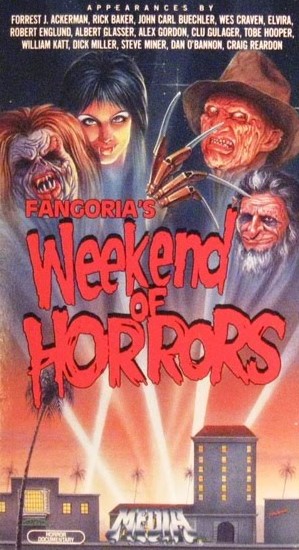
This was the first and only documentary on the Fangoria “Weekend of Horrors” phenomenon. It documents a WoH that occurred in the mid-eighties, and took place inside a posh Hollywood hotel. It begins with a rambling introduction by Fangoria’s then publisher Kerry O’Quinn, who promises a packed crowd a release from normality via a weekend of scares. From there we get interviews with Robert Englund, Wes Craven, Craig Reardon, Forrest Ackerman and Elvira, and plenty of miscellaneous clips—fans standing in line, the late Chas. Balun expounding on his passion for viscera, Ackerman getting a birthday cake, memorabilia getting auctioned off—with far too much time lavished on clips from then-topical movies (do we really need to see THE TOXIC AVENGER trailer in its entirety?). As for the ever-present bouncy synthesizer music, it’s both off-putting and quaintly nostalgic. Nostalgia, in fact, is the main attraction of this video, which lovingly documents a past era, and a cultural trend that’s well on its way to becoming extinct.
10. KIN-DZA-DZA!
A one-of-a-kind Russian sci-fier about two mismatched guys who get transported to a distant planet. The inhabitants are a bunch of weirdies who do an odd dance and speak a language that consists of a mere five or so words. This civilization is advanced in many respects—its citizens have wondrous flying machines and have mastered the art of interstellar travel—but primitive in most others. It’s an undeniably impressive, visionary film done with real conviction and imaginative brilliance, and (by Russian standards) a not-insubstantial budget. Yet it’s also extremely disjointed and, at over two hours, overlong, with an ending that drags on far longer than is necessary.
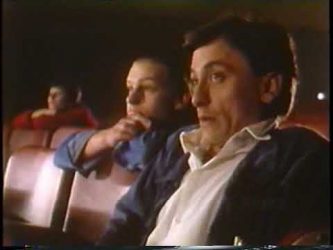 9. LIFE IS A DREAM (MEMOIRE DES APPARENCES)
9. LIFE IS A DREAM (MEMOIRE DES APPARENCES)
A seriously bizarre French ramble by Chile’s Raul Ruiz. The setting is a movie theater attended by a Cuban revolutionary that screens a compilation of anachronistic movie clips starring the protagonist and many of the people in the theater with him. From the beginning the onscreen drama spills out into the theater and vice versa, creating an out-of-control phantasmagoria that boils down to a surreal staging of Pedro Calderon de la Barca’s play LIFE IS A DREAM, with the revolutionary in the lead role. I’ll confess I understood very little of this film (which certainly wasn’t helped by a crappy visual transfer and oft-incoherent subtitles), but then I don’t think I’ve ever seen a remotely comparable mélange of such rapid fire weirdness.
8. TRUE STORIES
I recall that upon first viewing TRUE STORIES as a preteen I detested it so much that I and a friend stood outside the theater and implored people not to see it. Obviously I’ve had a change of heart in the ensuing years, with many of the things I initially disliked about TRUE STORIES—particularly the episodic faux-documentary structure, the overt quirkiness and the Talking Heads tunes that play throughout—now looking pretty damn good. The film is essentially a feature-length promo for the Talking Heads album of the same name, directed by and starring the band’s front-liner David Byrne. He was evidently trying for the type of pure-hearted quirkiness that marked the films of STOP MAKING SENSE helmer Jonathan Demme, but didn’t entirely pull it off, as quite a few portions fall flat. But the film is quite pleasing for the most part, consisting of Byrne taking us on an exploration of a fictitious Texas town and its many odd residents, including Swoosie Kurtz as a wealthy woman who never gets out of bed and John Goodman as a man so desperate for companionship he has a flashing “Wife Wanted” sign on his front lawn. It’s all interspaced with music video-esque music numbers, the best of which are a multi-person karaoke rendition of “Wild Life” and the “Puzzling Evidence” faux church sermon inspired, apparently, by the real-life Church of the Subgenius.
7. THE SEVENTH CURSE (YUEN CHUN HAP YU WAI SEE LEE)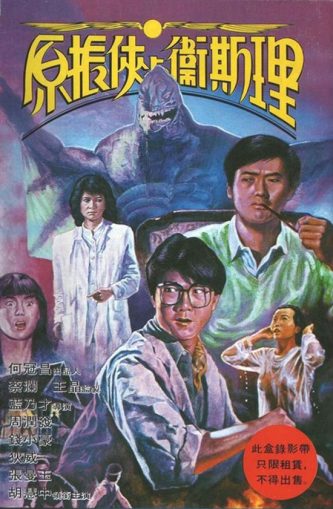
Hong Kong horror flicks are among the absolute wildest in existence, a fact amply demonstrated by this near-indescribable mélange of John Woo-styled gunplay, evil spells, gore, maggots and monsters. That last category is where the film really delivers, with a kung Fu-trained skeleton that frequently metamorphoses into a flying man-bat and a fetus-like critter who hops around on a worm-like tail. Watching these two slimy what’s-its go at it in the nutzoid climax is probably the closest you’ll ever come to the experience of being on acid without actually imbibing any. The rest of the film, incidentally, isn’t bad either; it stars Chow Yun Fat and Maggie Cheung (near the beginning of their respective careers) as adventurers on the trail of an evil sorcerer who’s put a “blood curse” on one of their buddies. They head to Thailand, where the curse was initially contracted, and kick lots of ass, human and otherwise.
6. WHEN THE WIND BLOWS
Quite simply one of the most powerful animated films I’ve seen. Based on a well-received graphic novel by Raymond Briggs, it’s about the effects of nuclear war on the Bloggs, an elderly British couple quietly living out their retirement in a secluded area of England. Unharmed after the nukes hit (about halfway through the movie), the Bloggs try their damndest to get back to normal, but find themselves inexorably falling prey to starvation and radiation sickness. Watching these two loveable coots slowly deteriorate makes for profoundly disturbing and heartrending viewing, with the only distractions being the gratuitous psychedelic interludes (apparently inserted to remind us that the film was made by the creators of THE YELLOW SUBMARINE). Great music, though, by Roger Waters, Genesis and David Bowie.
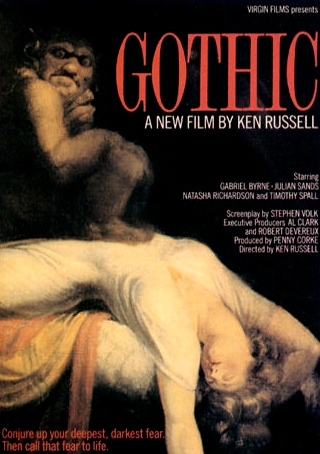 5. GOTHIC
5. GOTHIC
This strikes me as one of the late Ken Russell’s most satisfying films, even if is somewhat lacking in plot, characterization and historical accuracy. That last factor is rather important, as GOTHIC purports to show what happened one night back in the eighteenth century when Lord Byron, Mary Shelley and others ingested peyote and conjured up their “deepest, darkest fears,” from which Ms. Shelley (Natasha Richardson) conceived the story for FRANKENSTEIN. In direct contrast to Ivan Passar’s snooze-fest HAUNTED SUMMER (a dramatization of the same event that was released later in ‘86), Russell created a hyperactive shout-fest that never makes much sense. It’s a good thing, then, that the imagery is so consistently astonishing, with dying fish flopping in empty fountains, headless mannequins playing piano, vile creatures escaping from paintings and nipples metamorphosing into blinking eyes, accompanied by screechy synthesizer muzak and frenzied acting that contribute greatly to the general atmosphere.
4. BIGGLES (BIGGLES: ADVENTURES IN TIME)
A fun film, of particular interest to me because, admittedly, I was quite close to its production (the fact that I happen to share the last name of the co-screenwriter is not accidental). It’s based on the character of Biggles, a WW1 flying ace made famous in a series of books by Capt. W.E. Johns. Here, in a science fiction-tinged updating, Biggles (played by Neil Dickson) is periodically joined by a modern-day American man named Jim Ferguson (Alex Hyde-White), his “time-twin.” It seems that whenever one of them is in mortal danger the other appears to help out, leading to lots of complications as Jim is snatched back and forth at highly inopportune times. The whole thing is breezy and imaginative, even if there are some fairly gaping plot-holes (how is it that Biggles and Jim manage to travel back in time simultaneously?). Veteran director John Hough (THE LEGEND OF HELL HOUSE) makes the most of a very low budget; the aerial dogfights are particularly impressive, especially since the production only had two planes. The performances of Alex Hyde White as Jim and Hough regular Fiona Hutchinson as his GF leave much to be desired, although Dickson is quite strong as Biggles (a role he essentially reprised in the following year’s IT COULDN’T HAPPEN HERE).
3. THE DECLINE OF THE AMERICAN EMPIRE (LE DECLIN DE 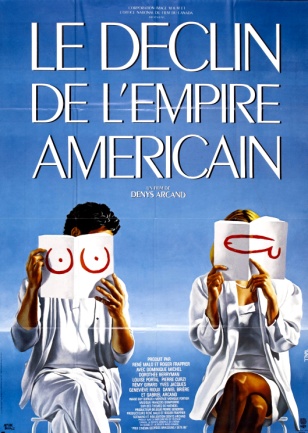 L’EMPIRE AMERICAIN)
L’EMPIRE AMERICAIN)
Who would have thought a French-Canadian film about intellectuals yakking for an hour and forty minutes would turn out to be one of the decade’s most invigorating cinematic offerings? Then again, the chatter in question, doled out by eight college professors on an island retreat, concerns sex and all things related, so maybe its allure isn’t all that surprising. The movie’s theme is a surprisingly intriguing one: that a society’s decline can be traced to how much leisure time is enjoyed by its citizens, and college professors, according to writer-director Denys Arcand, have more free time than anybody. It’s a slick, nearly flawless piece of filmmaking, and also one of the few films that made me squirm; as funny as it often is, it’s an extremely uncomfortable viewing experience. The titillation factor may be next to nil, but this is definitely among the most thought-provoking features ever made about human sexuality, and I say that’s just as good.
2. IN A GLASS CAGE (TRAS EL CRISTAL)
This 1986 Spanish shocker is one of the most repellant movies of all time, but it’s also a superbly made, endlessly thought provoking dissertation on the persistence of evil. The writer and director was Agusti Villaronga, who spins an account of an ex-Nazi child molester (Günter Meisner) confined to an iron lung, nursed by a creepy young man (David Sust) who happens to be one of Meisner’s now grown victims. There follows an unspeakable stew of madness and murder in a film marked by surprising restraint in its depiction of violence, which works quite well in counterpointing the near-unimaginably ugly story. This is a DARK film both thematically and visually: Villaronga shot on color film stock but banished nearly all “color” from his palette, and set his exposures to emit the bare minimum of light required. His efforts result in a palpable sense of pure evil, which in this film assumes a force as virulent and seductive as a vampire might be in a conventional horror movie. For the way it illuminates such difficult concepts and its undeniable technical virtuosity I deeply admire IN A GLASS CAGE, even if I can’t quite bring myself to recommend it.
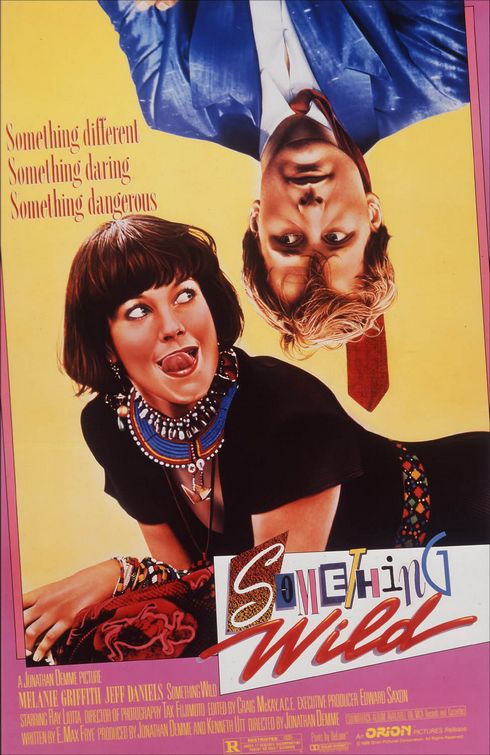 1. SOMETHING WILD
1. SOMETHING WILD
I say this is the masterpiece of Jonathan Demme, a kind-hearted yet cynical, funny yet dark, calm yet ferociously violent odyssey of romance, vice and anarchy. It begins with uptight yuppie Jeff Daniels giving reign to his inner rebel by leaving a restaurant without paying his check. He’s spotted by a never-better Melanie Griffith as the free-spirited Lulu, who kidnaps Daniels (not entirely against his will) and enlists him in an impromptu road trip. Lulu takes Daniels to meet her mother and then to her high school reunion, where they meet her psychotic ex-husband Ray (played smashingly by then-newcomer Ray Liotta), and their joyride suddenly takes on a far darker and more dangerous dimension. Much criticism has been lobbed at the film for its apparent stylistic shift from free-spirited comedy to dark-hued thriller, but I say that shift is entirely in keeping with the overall trajectory. Liotta’s insanity is both the comeuppance for our criminal heroes and the next logical step of their spree. The violence Liotta commits is strong and impacting, and presented with a great deal of nerve jangling suspense, yet the film never quite loses its funky, sardonic vibe (marked by raucous music, colorful locales and a spirited supporting cast). In that sense it has much in common with the same year’s BLUE VELVET, which got all the positive attention SOMETHING WILD should have received. Much of the problem seems to be that nobody has ever quite figured out how to market this unclassifiable gem: theatrically and on DVD the film was made out to be a light comedy, yet it’s open to debate whether it truly is a comedy, and if so it certainly isn’t light.
